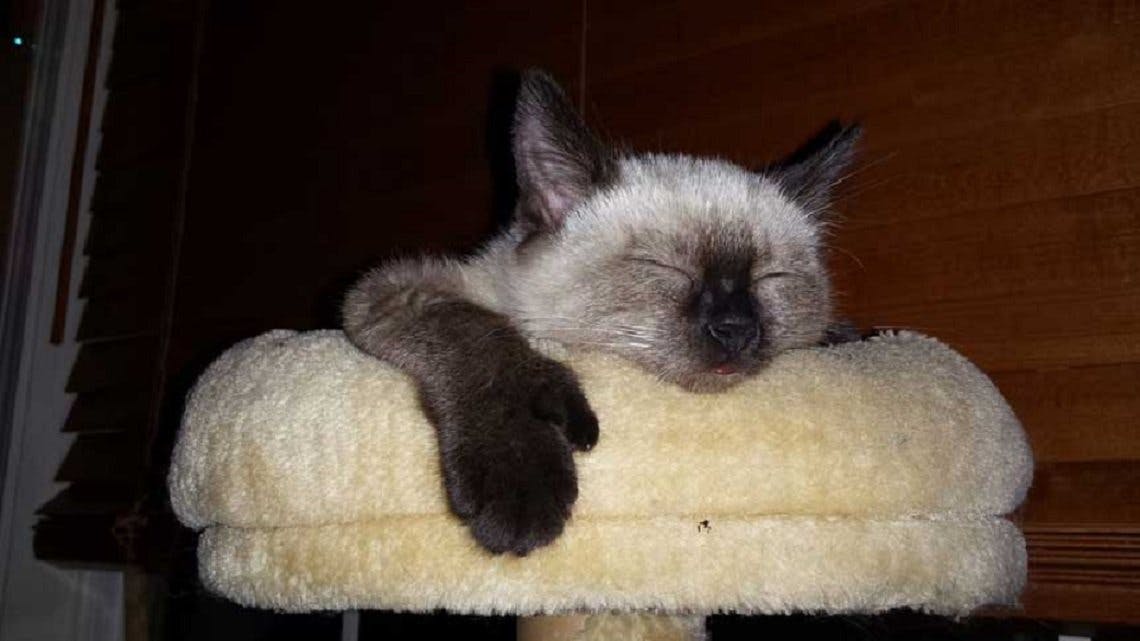Polydactyly header photo: Basepaws cat Simon, Lewiston, ID, hooman Mia Carlson
Paws are cute. And who has extra-adorable paws? Hemingway cats, of course! Hemingway cats are carriers of a genetic anomaly polydactyly. Polydactyly is a trait of an unusually high number of digits and it has been described in several species, including humans, cats, dogs, horses, mice, cattle, goats, sheep, springboks and birds (Hamelin et al, 2016).
Polydactyl cats are often referred to as Hemingway cats, as they have gained their popularity thanks to the famous American writer Ernest Hemingway. Maine Coons are thought to be predisposed to this genetic feature.
Background information on Polydactyl Cats:
Typically, cats have four toes and one dewclaw (thumb) on each front paw and four toes on each hind paw. Polydactyl cats have a higher number of toes than this in one or more paws. There are two forms of polydactyly described: post-axial and pre-axial.
Post-axial polydactyly is a form in which extra digits appear on the outer side of the paw, after the fourth phalange. This form of polydactyly is often called "snowshoe, pancake or patty paws". In pre-axial polydactyly, extra digits are present on the inside of the paw, before the dewclaw, and it is often referred to as "thumb or mitten paws" because of the appearance resembling opposable thumbs (Hamelin et al, 2016).
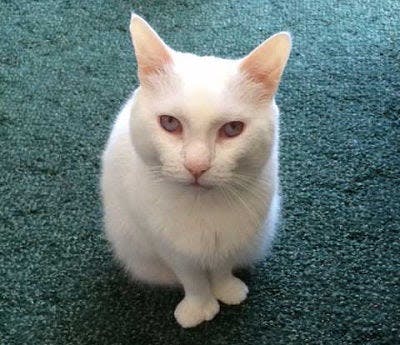
Basepaws cat Odin, Seekonk, MA, hooman Meaghan Paliotta
The Rare Genetics of Polydactyl Cats
Polydactyly in cats is associated with a mutation in the ZRS cis element of the Pd gene with incomplete penetrance. The ZRS cis element is a regulatory, non-coding region that targets the Shh gene. Shh gene is normally expressed in the zone of polarizing activity (ZPA, an organizer region in mesenchyme that contains signals for developing limb bud along the anterior/posterior axis). Shh is expressed on the posterior limb side of this region.
From this side, it diffuses anteriorly and laterally to the growth direction of the limb. However, in the mutant, there is an expression of this gene in a different organizer region on the posterior side of the limb instead. This expression causes cells divisions which will lead to the formation of additional digits (Lettice et al, 2003 & Lettice et al, 2012).
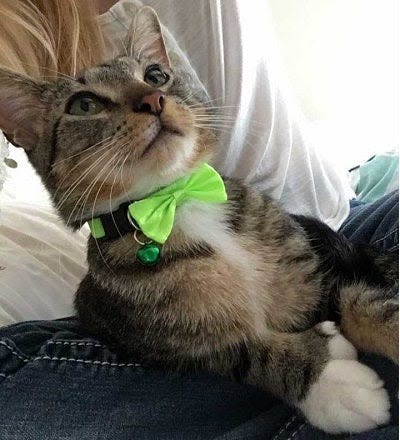
Basepaws cat Pippin (or Pipperoni), South Texas, hooman Samantha La Gesse
Polydactyl Cat Health: Symptoms and diagnosis
The primary symptom is the presence of the extra phalangeal growth on one or more paws. The extra digits can vary in size and structure. Because these digits can consist of only soft tissues or they may be inappropriately connected to bone structures, polydactyly cats can be more prone to injury. Sometimes, they can experience lameness and infections. If there is a fusion of extra toes at birth, this can also result in irregular growth and painful abnormalities. Polydactyly cats may also experience nail bed infections and irregular nail growth.
Treatment and prognosis
In most cases, polydactyly cats won't require treatment as the prognosis of the condition is generally good. If there are excessive complications the cat is experiencing due to its extra digits (as previously described), surgical removals are commonly performed.
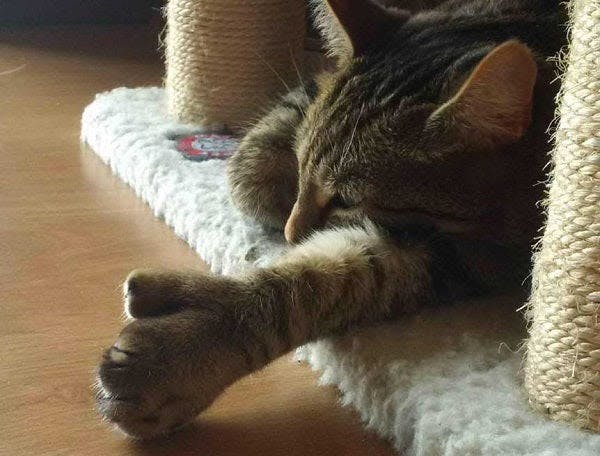
Basepaws cat Levi, Sydney (now in Ingonish), Nova Scotia, hooman Michaela duChêne
Did you know?
1. Do you know who the cat with most toes is? The current Guinness World Record for Most toes on a cat holder is Jake, a Canadian male ginger tabby who has 7 toes on each paw and 28 in total.
2. Do you that Alexander the Great and Caesar both rode polydactyl horses? Polydactyl horses have extra small supernumerary digits terminating in hooves on either side of the main hoof.
3. Do you know that polydactyly is a trait more commonly seen in cats than in any other mammalian species? We don't know why exactly this is yet, but the localization of target genes in feline chromosome could be the reason behind this frequency of this genetic feature. Certain loci on chromosomes, conveniently termed hot-spots, are more susceptible to mutations than others.
4. Do you know that there are two breeds to claim historical reference to feline polydactyly? While Pixie-bob is the only breed that accepts polydactyly in the breeding program, the Maine Coon Polydactyl is different from the Maine Coon and is recognized as an official breed by many cat fanciers, as well as by the TICA.
5. Do you know that polydactyly can sometimes be beneficial? Large paws can be helpful for walking on certain surfaces such as snow and are also useful in climbing and hunting. This could be why the trait is commonly observed among Maine Coons, cats adapted to life in snowy areas.
6. Do you know polydactyl cats are believed to bring luck? Back in time, sailors believed that polydactyl cats were particularly lucky, which is why they were often brought on ships.
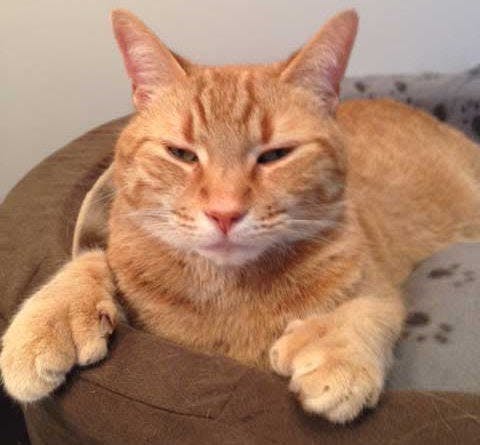
Basepaws cat Clawdius Maximus Toesus (Clawd for short), Victoris, British Columbia, hooman Tahna Neilson
Feline polydactyly is an intriguing genetic anomaly, and although rather common, we know surprisingly little of this phenomenon. Do you have a polydactyl cat whose photo you'd like to share? Reach out to us on FB, IG or Twitter! Learn more about Cat DNA here.
Photo credits:
All the photos presented above belong to the Basepaws clients. To read short stories of their cats please visit the older version of our Polydactyly blog and meet more polydactyl cats from the Basepaws family.
Bibliography:
1. Hamelin A, Begon D, Conchou F, Fusellier M & Abitbol M. (2016). Clinical characterization of polydactyly in Maine Coon cats. Journal of Feline Medicine and Surgery. doi:10.1177/1098612X16628920
2. Lettice LA, Heaney SJ, Purdie LA, Li L, de Beer P, Oostra BA, Goode D, Elgar G, Hill RE, de Graaff E (2003). A long-range Shh enhancer regulates expression in the developing limb and fin and is associated with preaxial polydactyly. Human Molecular Genetics. 12 (14): 1725–35.
3. Lettice LA, Williamson I, Wiltshire JH, Peluso S, Devenney PS, Hill AE, Essafi A, Hagman J, Mort R, Grimes G, DeAngelis CL, Hill RE (2012). Opposing functions of the ETS factor family define Shh spatial expression in limb buds and underlie polydactyly. Developmental Cell. 22 (2): 459–67. doi:10.1016/j.devcel.2011.12.010.
